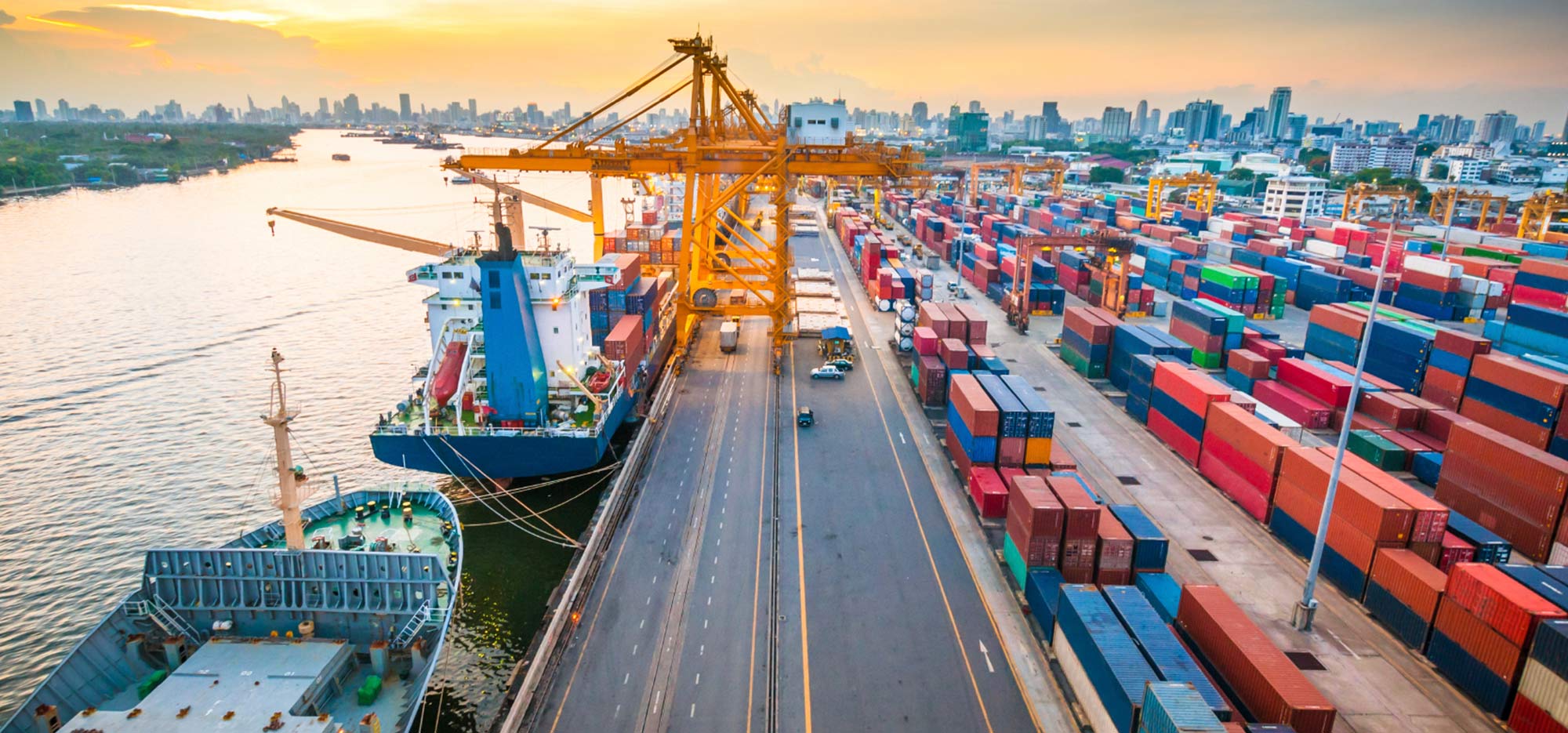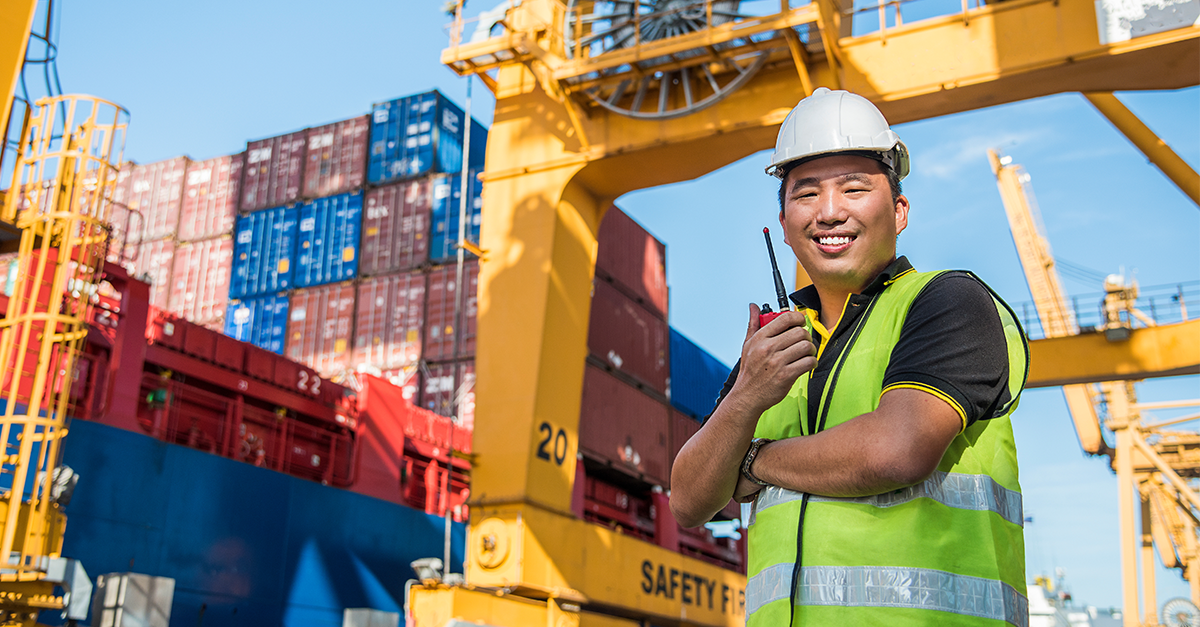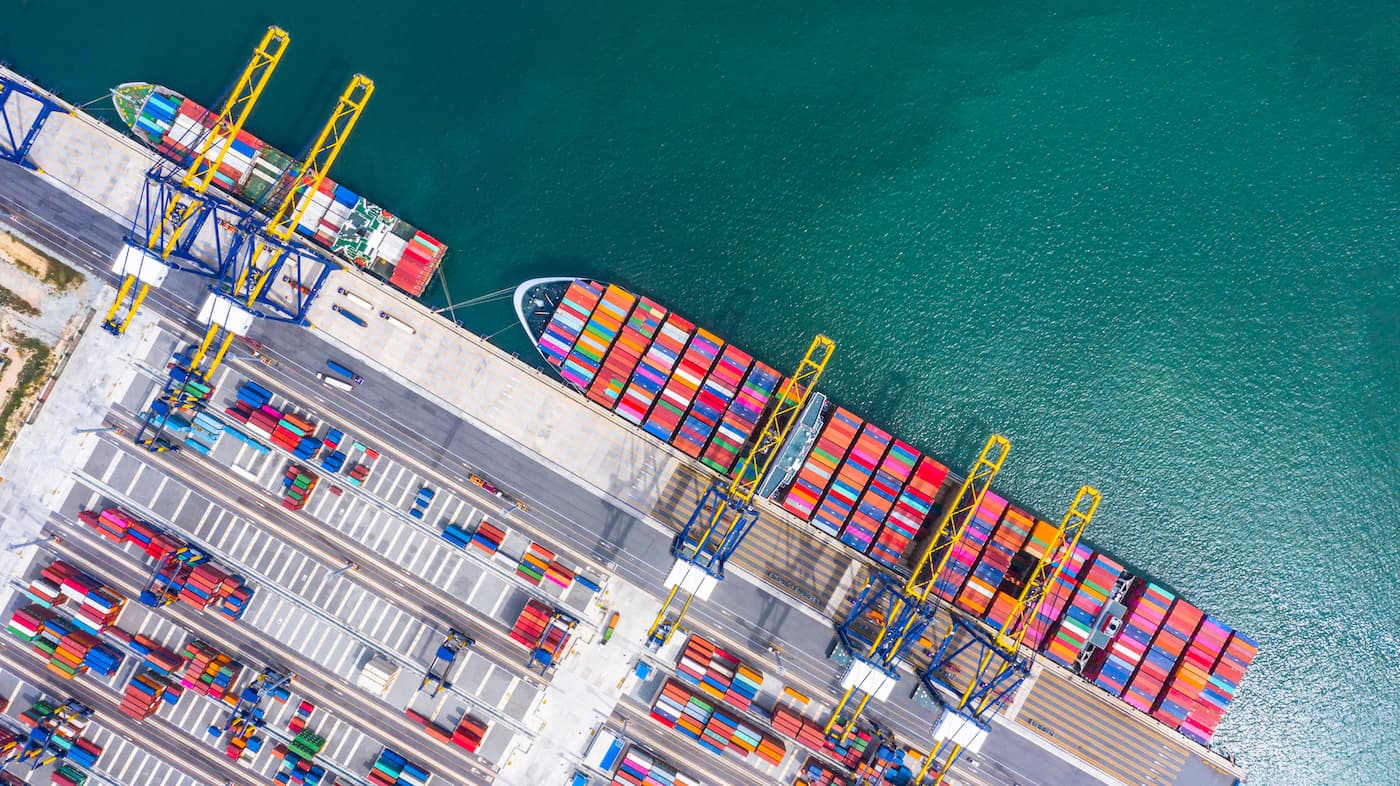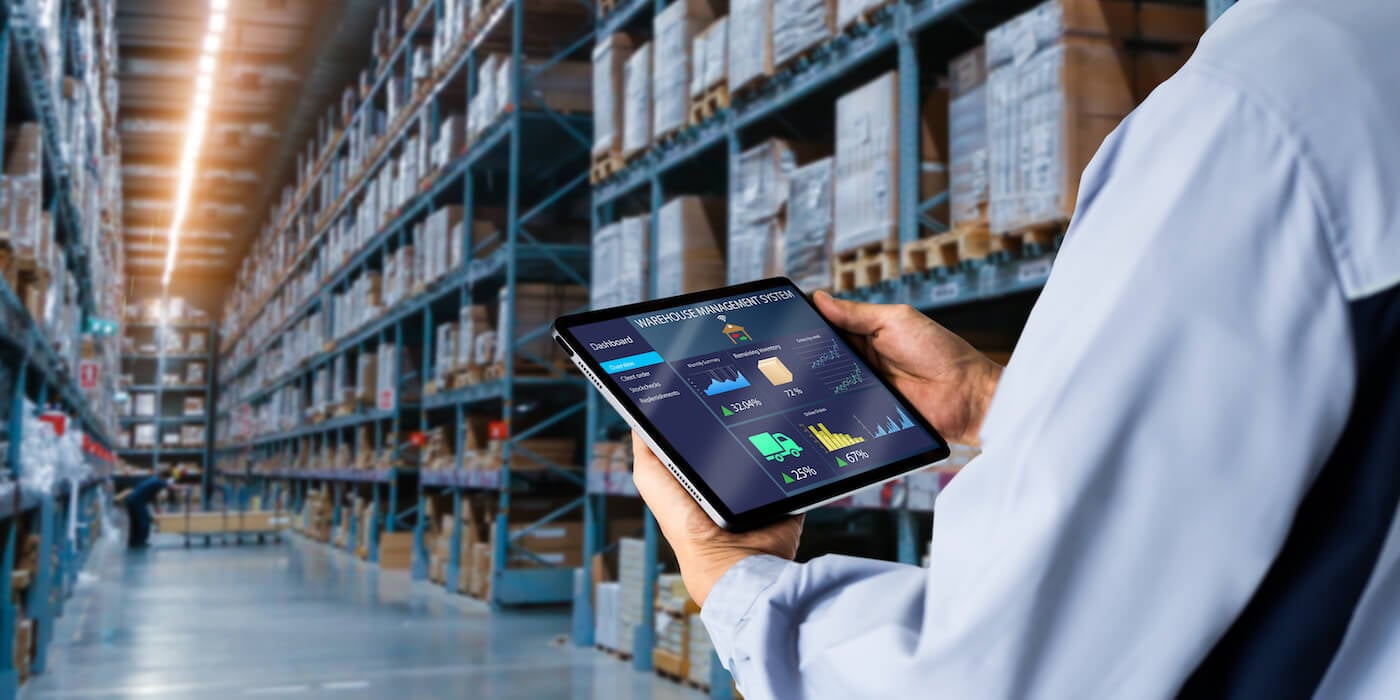This all-important network provides the critical guidance and support so vital for the smooth operation of the ever-evolving freight forwarding industry. Freight management logistics comprise the core mechanisms and infrastructure at the heart of this estimated $270 billion global business. Though essentially invisible to the land-based general public, international maritime shipping accounts for about 90 percent of world trade, and without such logistical precision underpinnings, would simply not be possible.
The following is a brief history, as well as a useful breakdown, of the key components of freight management logistics, including: communication, tracking and tracing, warehousing and distribution, customs, and insurance.
Understanding Commercial Logistics
Historically, “logistics” has been largely associated with military campaigns, such as the procurement, maintenance and transportation of materials and personnel along supply lines. By the 1960s, however, its many benefits to the administrative and organizational processes of the business world proved invaluable, and gave rise to a wide range of related specializations.
The commercial shipping industry, in particular, adopted more acute logistical applications in the wake of weathering a veritable market sea change during the mid-1980s. Detailed in a 1986 article in The New York Times titled "Shipping Awaits A Rebound," this period was characterized by “tumbling freight rates, rising costs, and sinking values of used ships,” which flipped the shipping world on its head and made logistics management a necessity for manufacturers and retailers alike; first, to capitalize on the cost-saving opportunities, but also, simply to remain on par with competitors.
Companies who embraced the new normal of cost-cutting adopted longer, more highly optimized supply chains. To do this, they suddenly needed to master the detailed coordination of complex operations involving many people, facilities, and supplies—the very definition of logistics.
In 1982, in the midst of this period of great change and uncertainty—one of several globally turbulent eras in shipping—CAF Worldwide was founded. Successfully navigating such waters requires strict adherence to what's known as the so-called "Seven Rs of Logistics.”
Logistics 101
To fully comprehend the inherent complexities involved in strategically coordinating the many elements and respective functions integral to the successful execution and operation of the international maritime shipping industry, it's helpful to first understand these basic, yet self-evident principles, representing:
1. The Right Product
2. The Right Place
3. The Right Price
4. The Right Customer
5. The Right Condition
6. The Right Time
7. The Right Quantity
Ensuring the correct cargo reaches its intended destination safely and on time is priority number-one. The logistical processes of freight management are equal parts mechanical and organic, and in order for their respective supply chains to function well, each of myriad moving parts must pull its weight in perfect synchronicity.
Viewing an interactive global map of ocean, air and land freight channels can be mesmerizing, to say the least—a choreographed performance of meticulous precision akin to the finely-tuned inner workings of a fine Swiss watch—and each package received by a consumer early or on-time is evidence of this supply chain science at work.
The Role of Freight Forwarders
Overseeing these mechanics and ensuring this exactitude is a freight management logistics team dedicated to:
- Maintaining relationships with steamship lines
- Minimizing empty miles by coordinating efficient shipping routes
- Negotiating freight rate contracts
- Ensuring continued customs compliance and insurance protection
1. Communication
2. Tracing and Tracking
3. Warehousing and Distribution
4. Customs
5. Insurance
Communication
Logistics collaborates with several departments within an organization: operations, manufacturing, and marketing, among these. Such interactions influence decisions regarding finance, production, engineering, marketing, transport, warehousing, purchasing, and inventory management.
What does this do for an organization’s bottom line?
When communication responsibilities are entrusted to an outside logistics provider, related costs are reduced, since they minimize the amount of connections needed to link a variety of economic players all working toward the same goal.
Without a centralized structure for communication, companies risk mixed or missed messages, and consequently, the entire interconnected network outlined above is threatened.
Tracing and Tracking
Forwarders typically utilize specialized software, called a TMS (Transportation Management System), to trace and track shipments, making any freight’s journey completely transparent. This helps logistics management to:
- Save money
- Develop more efficient procedures
- Improve customer service
Here’s how it works:
A TMS provides important data regarding carrier performance, transportation costs, and market trends. This enables freight forwarders to continually make strategic, cost-effective changes to a supply chain. Additionally, the TMS detects any hiccups that may defer delivery, facilitating prompt notification for any customers who may be affected by the delay.
Warehousing and Distribution
Diligence in the warehousing and distribution realm can pay dividends for your supply chain. Here, there are ample opportunities for costly mistakes to be made, but also to excel. Freight is invaluable to both buyers and sellers, so consistent warehousing and distribution procedures help logistics earn trust and strengthen relationships with partners.
Several value-added warehousing and distribution services include:
- Cargo Packing and Crating
It is a common misconception that distributors are solely responsible for packaging product, when, in fact, many choose not to take on the responsibility because they lack the know-how to comply with international shipping policies. Rather than leaving inexperienced distributors to risk fines and sanctions, logistical partners assist with expert freight packaging and crating practices, to ensure safe and legal passage, always.
- Pick and Pack
"Pick and pack" is the process by which the individual components of an order are gathered from master cartons (picked) and then placed into a box, envelope, or shipping container to a specific recipient and/or destination (packed).
- Labeling
+ Barcode schema - When deciding between available schemas, logistics must first define what inventory data will be readable, such as the expiration date, manufacture date, weight, or serial number, for example.
+ Label materials - Label material is particularly important for perishable cargo, as temperature-regulated warehouses and containers are unkind to standard paper labels.
+ Label placement - For instance: Placing labels at eye level, printing in easily readable colors, and adequate signage mapping precise inventory locations.
+ Complementary technologies - Facilities may cut down on travel time and distance within a warehouse by utilizing mobile printers, for example.
- Vendor Assembly and Consolidation (“Kitting”)
Labeling a warehouse requires careful attention to detail, lest the operation leave a supply chain jeopardized by wasted labor hours and lost inventory. Some elements that logistics accounts for when labeling a warehouse include: - “Kitting” - This is the process in which individually separate-but-related items are grouped, packaged, and supplied together as one unit. This enables retailers to sell different products as part of—you guessed it—a kit.
And last, but certainly not least:
- Visual Inspection Services
Buyers and sellers alike will ask for their cargo to be visually inspected to check that, first, it is loaded and stowed properly, but also just to be sure that the cargo being shipped and the cargo that’s been bought or sold are, in fact, one and the same. A thorough visual inspection might look something like this:
Step 1: Inspect the carrier for cleanliness, dryness, ventilation, and cargo separation to be sure the vessel is appropriate for its designated cargo.
Step 2: Report on markings, type of packing (bulk, cartons/drums, etc.) and a count of goods.
Step 3: Confirm that a valid mate receipt (document signed by an officer of a vessel evidencing receipt of a shipment on board the vessel) was received.
Step 4: Verify that units match those listed on the order description.
Step 5: Check packages and labels for correct dates and batch numbers as well as supplier certificates.
Step 6: Document when and where product was loaded, and the processes used to do it.
Step 7: Maintain a time log that includes dates and times of arrival, departure, loading, and delays (citing the reasons for the delays). Descriptions of loading gear and weather conditions should also be listed.
Customs
When goods enter or leave the country, customs brokers produce documentation for the shipper to prove that the required customs procedures have been performed and that the goods are cleared for shipment.
This is a gross oversimplification, however.
Remember all of those nuanced warehousing procedures? Freight is warehoused as it goes through customs clearance, so if those aren’t complied with, fees will pile on that could add up to hundreds or thousands in avoidable shipping costs.
Whether it be documentation for exports or imports, the paperwork is extensive, and laws vary from country to country and port to port, in some cases. Without the proper attention from a licensed customs broker, logistical errors can be made when importing or exporting freight, which can cost time, money, and relationships.
Documents required for importing or exporting cargo are:
- Purchase order from buyer - A purchase order is the first contract to the seller stating that the importer is ready to commit to purchasing the goods. Before a purchase order is issued, some terms must be negotiated. This includes:
- Price
- Quantity
- Quality
- Description
- Latest ship date
- Mode of transportation
- Sales Invoice - The sales invoice must contain enough information for a Customs and Border Protection (CBP) Officer to determine if the goods being imported are admissible. You’ll notice some redundancy between customs documents, but this does not mean lax attention to details. For example, a sales invoice includes:
- Clear description of the item
- Quantity
- Value, in foreign currency and U.S. dollars
- Country of Origin
- Where it was purchased
- Names and locations of buyer and seller
- Address of the person or business the goods are being shipped to
- Packing list - A packing list accompanies an international shipment and is used to inform transportation companies about what they are moving. It also enables the customer and others involved in the transaction to check what has been shipped against the invoice. Additionally, a packing list may:
- Accompany an insurance certificate
- Be used to issue a Bill of Lading
- Contribute to electronic export information (EEI)
- Help customs officials verify goods
- Shipping bill - A shipping bill is a statistical record where drawback (monetary rebate) is claimed.
- Bill of lading (or airway bill) - The bill of lading (BOL) works as a receipt of freight services. It is a legally binding document showing the driver and the carrier all the details needed to process and invoice a freight shipment.
- Bill of entry - A bill of entry is a declaration by an importer or exporter of the exact nature, precise quantity, and value of goods being shipped or received that is examined by authorities for accuracy and conformity with the tariff and regulations.
- Certificate of Origin - Document confirming that the goods in a particular shipment have been wholly obtained, produced, manufactured or processed in a particular country.
*Additional requirements may include any other documentation as specified by the buyer, or financial institution, or LC (letter of credit) terms per importing country regulations.
When shopping around for freight forwarders, it is important to research whether a given forwarder is experienced and knowledgeable enough to handle your customs brokerage. If not, consider employing a customs broker who is separate from that forwarder, as customs brokerage is not an area where pinching pennies pays off.
Insurance
The final area of expertise concerning freight management logistics is insurance.
According to industry experts, cargo theft is a $30 billion a year business. While this is certainly the most frightening threat to your freight, it is far from the only bad thing that could happen to your cargo.
Also adding to the potential for loss or damage are:
- Long voyages
- Extensive moving and shifting of cargo
- Handling
- Bad weather
So, protecting your cargo from point of departure to final delivery is paramount.
Some forwarders will provide a range of insurance options. Check with yours to see if they will set you up with a plan that suits your cargo’s needs.
CAF Worldwide: An Industry Leader
CAF Worldwide is a freight forwarding and management logistics leader with more than three decades of experience providing clients the highest level of service and supply chain solutions. Contact Us Today.
Topics: Freight Forwarding, freight management logistics
CAF Worldwide has been a trusted leader in global logistics and freight forwarding since 1982, delivering tailored supply chain solutions with a focus on reliability, innovation, and customer-centric service. Specializing in industries such as apparel, footwear, and consumer goods, CAF offers comprehensive services including air and ocean freight forwarding, customs brokerage, intermodal transportation, warehousing, and RFID-based tracking. With a strong presence in Southeast Asia and Bangladesh, CAF ensures efficient, secure, and timely delivery for clients worldwide. Guided by core values of advocacy, loyalty, and integrity, CAF Worldwide is committed to advancing global trade through ethical practices and cutting-edge technology.













 Copyright 2025 CAF Worldwide. All rights reserved.
Copyright 2025 CAF Worldwide. All rights reserved.